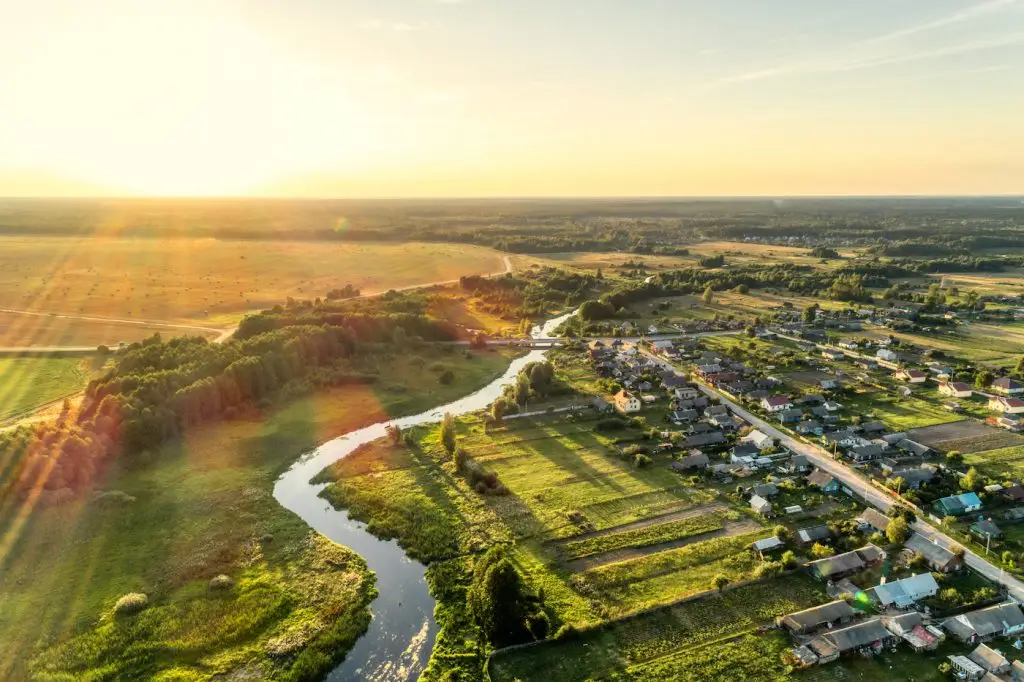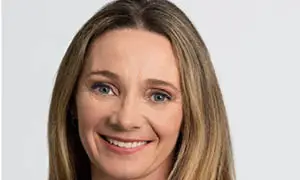From instruction to field experience: Ilona Monkman discusses working in a First Nations health centre
In this interview, Ida Sadowski, CHIM, a health information management (HIM) instructor at Saskatchewan Polytechnic (Sask Polytech) is in conversation with Ilona Monkman, CHIM, a health information management technician at the Sturgeon Lake Health Center on Sturgeon Lake First Nation. Ilona is a graduate of the HIM diploma program at Sask Polytech and a former student of Ida’s.
Ida:
Can you share a little bit about yourself and how you came to be an HIM professional? I love the path you’ve taken to get here.
Ilona:
Absolutely. I appreciate the opportunity to talk about it any chance I get. I graduated from Sask Polytech last year and did my final year practicum at Sturgeon Lake Health Center. After graduation, they hired me immediately, so I achieved certification while I was already employed, which was really nice. I currently live in Prince Albert and make a 30-minute daily commute to the clinic on reserve.
Ida:
I understand you’re the first HIM to work on reserve with the First Nations health centre. What interested you most about pursuing an HIM-related job with the Sturgeon Lake First Nation Health Center?
Ilona:
To my knowledge, there aren’t many First Nations health centres like ours that have health information departments. Typically, in a First Nation, you’ll only have nursing stations and maybe a couple of other visiting health care professionals and administrative staff. So, I’ve been learning a lot in the last few years about how First Nations leadership and organizations have consistently expressed this desire to govern their knowledge and health information. When I learned that there might be opportunities to get involved, as a Métis person, I was really eager to help realize this goal. Also, HIM is interesting and trailblazing, just like Sturgeon Lake. The community has made some incredible additions to their services in the last few years. I found that fascinating.
Ida:
Do you feel like you have to rely on other skills, or was your HIM qualification sufficient for you to be a good fit for the job?
Ilona:
The first thing that comes to mind is that every day I have to practice a little extra humility. Maybe that doesn’t seem like a job skill, but my education was entirely western. The First Nations’ self-governance and the expectation for all the staff here, regardless of their background, is that we regard the rights of the nation to determine their health services and how their knowledge systems are accessed. This is actually supported by the United Nations. They have a declaration about how Indigenous people have rights to their own governance of health information.
Ida:
Tell me about some of the significant takeaways from your year-two practicum at the centre.
Ilona:
My experience with technology and software was vital, and so was being flexible and accommodating of differences in lifestyle or beliefs.
Unfortunately, I saw firsthand how the policies that have historically determined the collection, use, and interpretation of First Nations’ health information have led to the failure of Canada’s health care systems to provide for Indigenous populations.
First Nations are now legally entitled to be involved in the procurement and planning of health services, but it’s difficult because many are still recovering from the effects of colonization and ongoing marginalization. I am grateful that my HIM program set me up to understand how different professions and disciplines can interact with each other; I was a lot more prepared than I expected for the work environment.
Ida:
Excellent! We’re hoping throughout our curriculum, as we’ve got content regarding multiculturalism and Indigenization, that we are helping students like yourself be prepared or better prepared for what you’re going to potentially see and do—not just during practicum but throughout your career.
Can you tell me a little bit about some of the unique programs and services offered at the Sturgeon Lake First Nation Health Center?
Ilona:
Absolutely. Sturgeon Lake First Nation has what’s called a health transfer agreement, so the community develops and maintains their own health model. It integrates Western and traditional practices, and one of the unique programs they’ve developed in the last few years uses traditional pregnancy, childbirth, and postpartum care to enhance the wellness of new mothers and families. Workers in this program provide one-on-one care, counselling, group classes, and home visits to expecting and new parents. The program will be getting a new building on reserve—a traditional birthing centre—and construction is expected to begin in the spring of 2023.
Ida:
That’s awesome, and it’s been making the news in Saskatchewan! Could you tell me a little bit about the specialized health information management system implemented at your site?
Ilona:
At the centre, we implemented a community electronic medical record (EMR) system developed by Mustimuhw Information Solutions Inc. They’re a Cowichan-owned company based in BC, and we’ve continued to develop their system at our clinic in coordination with them. This community EMR captures data from almost all our programs and providers, which was a difficult criterion with other EMRs because most of them are created for physician-focused organizations. Sturgeon Lake Health Center employs over 30 paraprofessionals, so we need to track data and report to leadership and funding agencies. Few other EMR systems allowed us to do this, but Mustimuhw is built for that.
Ida:
That was excellent. And I love the fact that this is a Canadian story, that this company out of British Columbia has found a solution for First Nations’ information governance in BC and across Canada.
Do you have any words of wisdom or insight you can provide to other HIM professionals seeking out or interested in working with First Nations communities on reserve or in some other capacity?
Ilona:
What’s important to recognize is that there’s a gap between First Nations’ health care on reserve and in urban settings. For example, the frameworks for First Nations’ care are still extremely limited. For HIM students or anyone else in the field who’s still entrenched in that settler environment, beginning with an urban centre that involves First Nations in their decisions about people’s health care would be my recommendation. It can be a lot smoother to start in an urban setting and then begin working with reserves in the area to see what they need and how you can be involved in practice, policy, or research. I just really ask that people seek out exposure and education first. There are so many diverse systems of knowledge in the First Nations across Canada, so health practices should reinforce social empowerment rather than marginalization and exclusion. It’s important to keep that in mind, I think.
Ida:
It definitely is. I think coming with an open mind is important.
How has the community responded to you being part of their team? It’s a unique and new opportunity to have an HIM there. Tell us about how they respond to you and how you are part of that team.
Ilona:
Absolutely! I’ll share a cute example. We recently had a staff retreat and had to choose one word to describe each of our co-workers, and the word that I received was ‘lifesaver.’ I think that would probably describe a lot of HIMs if they work in that non-traditional environment (or in our case, a Traditional environment) where they bring technology and health policy experience. This is unique to our field, and it’s great to get the word out about it. Of course, I’m still meeting a lot of band members who’ve never heard of HIM specifically, but the leadership, management, and all my coworkers seem to appreciate the knowledge that is available in my field. Everyone here is so welcoming, and it’s a really inclusive space.
Ida Sadowski, FCP, Cert. (HRT), Dip. (HIS), CHIM
Health Information Management Instructor
Saskatchewan Polytechnic
Ida has worked in Saskatchewan and British Columbia in a variety of HIM roles. She has been a part-time instructor at Saskatchewan Polytechnic since 2004, having started in a casual role in 2002 and 2003. Ida has volunteered with the former Saskatchewan Health Records Association (SHRA) and the Health Records Association of British Columbia (HRABC). She has also volunteered with the International Federation of Health Information Management Associations (IFHIMA) and the Canadian Health Information Management Association (CHIMA) and is currently on the board of the Saskatchewan Epidemiology Association (SEA).
Ilona Monkman, BSc, CHIM
Health Information Management Practitioner
Sturgeon Lake Health Center
Since completing Saskatchewan Polytechnic’s Health Information Management diploma program in 2021, Ilona has worked at Sturgeon Lake Health Center. This opportunity was offered after an extraordinary practicum placement under the Senior Health Nurse at Sturgeon. As the HIM Practitioner, Ilona has been described as a “lifesaver” and makes herself available to all health programs for tech support, database management, and policy development, among other responsibilities. She has received certification from the Canadian College of Health Information Management and is passionate about First Nations data sovereignty.
CHIMA would like to acknowledge the support of Sturgeon Lake First Nation Chief Christine Longjohn and Saskatchewan Polytechnic in the production of this interview.
Ida and Ilona’s interview responses have been edited for the purposes of this article.






